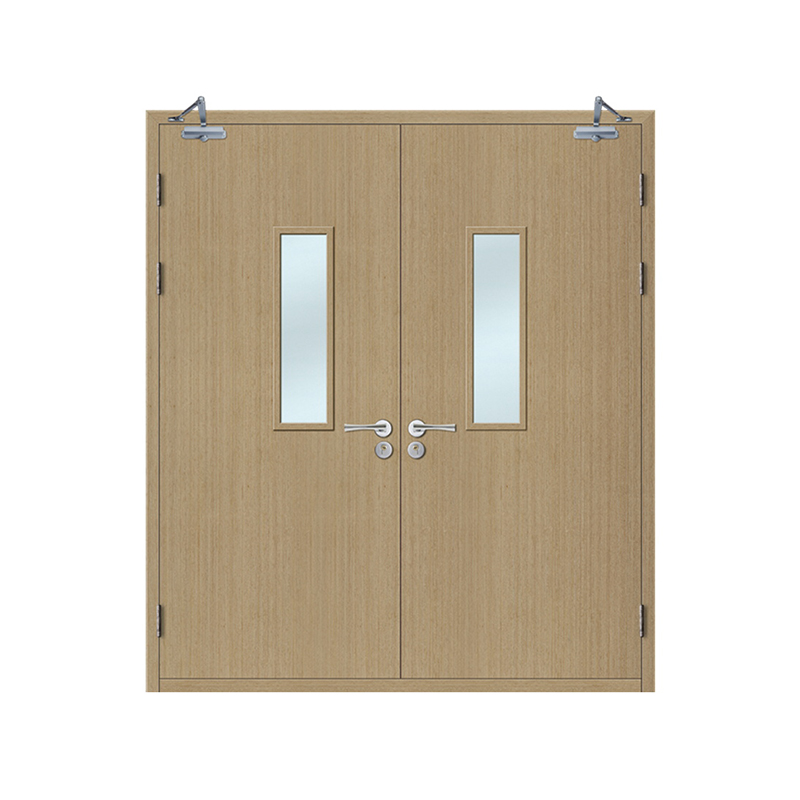We provide quality products and services to customers from all over the world.
Do Fire-Rated Security Doors Provide Both Safety and Burglar Protection?
In today's building landscape, doors must serve multiple protective functions without compromising on design or functionality. This dual-demand has led to significant advancements in specialized door systems, particularly those combining fire safety with security features. Among these innovations, fire-rated security doors have emerged as a comprehensive solution for commercial and high-end residential applications where protection against both flames and forced entry is paramount.
The fundamental question many architects and property owners face is whether these doors truly deliver on both promises. A well-engineered fire-rated security door achieves this balance through robust construction that goes beyond standard fire doors. While traditional fire-rated pivot door systems excel at compartmentalizing flames and smoke, they may lack the reinforced cores and locking mechanisms needed for true security. Modern hybrid designs now incorporate steel reinforcement plates and multi-point locking systems within their fire-resistant cores, creating barriers that deter intruders while maintaining their critical fire-stopping capabilities.

Commercial settings particularly benefit from this dual-purpose approach. In office buildings where large openings are necessary, fire-rated double swing doors with security enhancements allow for smooth traffic flow while providing emergency protection. These specialized versions maintain their fire resistance ratings while incorporating security features like concealed vertical bolts and tamper-proof hinges. The evolution of these systems demonstrates how fire protection and security no longer need to be mutually exclusive priorities in door selection.
The mechanics of how these doors achieve both functions is fascinating. A typical fire-rated security door starts with a steel or mineral core that withstands high temperatures, then adds layers of fire-resistant materials and finally a reinforced facing that resists prying and impact. This differs from standard fire-rated pivot door constructions which prioritize smoke seals and intumescent strips over physical security. Manufacturers have refined this layering process to ensure neither protection aspect is compromised, allowing the doors to meet both UL fire ratings and ANSI security standards.
Installation considerations for these hybrid doors require special attention. Unlike conventional fire-rated double swing doors that focus primarily on proper gasketing and frame alignment, security-enhanced versions demand precision in reinforcing the entire door assembly. The frame must be anchored to withstand both the pressure of a fire and the force of an attempted break-in. Professionals installing these systems often use specialized hardware that maintains fire integrity while providing the necessary resistance to forced entry.
Design flexibility has improved dramatically in recent years. Early versions of fire-rated security doors often looked industrial and utilitarian, but contemporary options can mimic high-end architectural styles. This aesthetic evolution means building owners no longer need to choose between safety and design when specifying doors for visible areas. Even sophisticated fire-rated pivot door configurations now offer security upgrades without sacrificing their sleek, modern appearances.
Maintenance requirements for these dual-purpose doors differ from standard fire doors. While all fire-rated double swing doors need regular inspections of their seals and closing mechanisms, security-enhanced versions additionally require checks on locking systems and hinge integrity. This slightly increased maintenance is offset by the value of having a single door system that addresses multiple safety concerns, particularly in buildings where security threats may be as likely as fire emergencies.
The cost-benefit analysis often surprises building owners. While a high-performance fire-rated security door carries a premium over basic fire doors, it frequently proves more economical than installing separate systems for fire and security protection. This is especially true in retrofit situations where door openings can't accommodate multiple specialized doors. The combined solution also saves on long-term maintenance costs by reducing the number of components needing regular service.
Educational facilities and healthcare buildings have been early adopters of this technology. Schools implementing fire-rated security doors gain protection against both fire spread and potential intruders, while hospitals benefit from the added security without compromising life safety systems. These applications demonstrate how the technology serves environments where protection priorities are equally balanced between different types of threats.
Interested in cooperation or have questions?
![]() +86-13857003056
+86-13857003056
![]() No. 27 Lianhuashan Avenue, Jiangshan Economic Development, Jiangshan, Quzhou, Zhejiang, China
No. 27 Lianhuashan Avenue, Jiangshan Economic Development, Jiangshan, Quzhou, Zhejiang, China

 English
English русский
русский Français
Français Español
Español عربى
عربى
